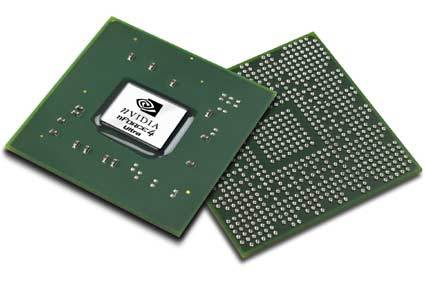NVIDIA Rushes Into PCI Express With nForce4
NVIDIA Rushes Into PCI Express With nForce4
NVIDIA's nForce4 is finally about to arrive. While the actual real-world availability of nForce4-based motherboards remains questionable, two versions of the chipset are being officially launched: the nForce4 and nForce4 Ultra. The most interesting member of the family will follow later: the nForce4 SLI, which splits the x16 PCI Express graphics port into two logical ones running x8, for dual graphics.
nForce4 was not designed entirely from scratch; rather, it is a logical evolution. In a nutshell, it adds value typical of that which has been separating the Athlon64 platforms from Intel's latest 900 series chipsets. Those AMD platforms have access to lots of marketing-friendly buzzwords and features such as PCI Express, High Definition Audio and quad SATA ports with sophisticated RAID. Given the new feature set and AMD's recent introduction of lower-speed 90 nm Athlon64 processors for Socket 939, the battle for market share will definitely heat up again soon.
There is no technical reason to opt for a PCI Express enabled platform right now, but the technology will become more and more important over the next couple of months. While upcoming generations of graphics cards will certainly be available both for AGP and PCI Express, we expect the latter to become predominant in about a year, if not sooner.
NVIDIA is making the transition to PCI Express particularly easy due to the vast number of features that have been crammed into the nForce4 chip. There are four Serial ATA (SATA) ports capable of running at 3 GBit/s, a more advanced native Gigabit Ethernet controller with integrated hardware firewall, a total of 10 USB 2.0 ports, and of course three x1 PCI Express lanes in addition to the x16 graphics interface. However, NVIDIA decided to abandon their Sound Storm audio as well as the Firewire controller used in nForce2.
Get Tom's Hardware's best news and in-depth reviews, straight to your inbox.
Current page: NVIDIA Rushes Into PCI Express With nForce4
Next Page nForce4 Facts
Patrick Schmid was the editor-in-chief for Tom's Hardware from 2005 to 2006. He wrote numerous articles on a wide range of hardware topics, including storage, CPUs, and system builds.
